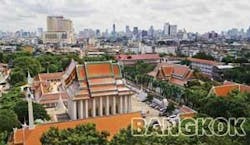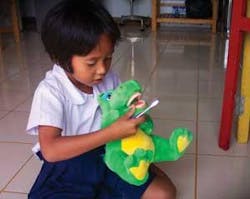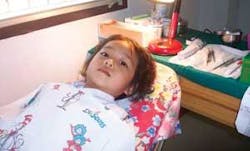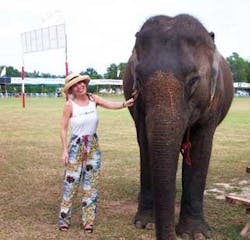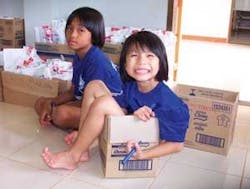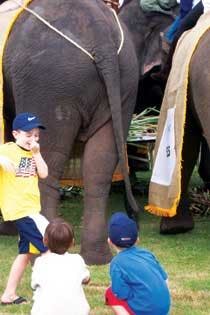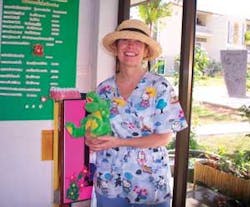Post-Tsunami
In the chaos of catastrophe, I quickly learned that knowing what needs to be done and actually implementing it are two different things.
When the tsunami hit Thailand on Boxing Day 2004, it was not unusual for me to be reading the Bangkok newspapers online at my home in Connecticut. I had been to Thailand the previous year, fell in love with the country, and planned to return. I looked at the aftermath of the tsunami and my thoughts immediately turned to dental identification. The standardized charting software used by the Connecticut dental identification team was already on my laptop. All I needed was a portable handheld 12-pound X-ray unit with a digital sensor, and I could do IDs right on the beach. Via e-mail, the proper authorities, or any dentist in the world, we could make a match that same day.
In the chaos of catastrophe, I quickly learned that knowing what needs to be done and actually implementing it are two different things. What I needed to get it done was about $20,000 worth of the latest technology, and permission from a forensics team. I spent the next month writing to everyone I could think of to gain access to either, but with no success. One of the hygienists on the 9/11 team wrote to me to say quite simply, “We haven't been called up.” When I read an article about a physician vacationing near Phuket who was turned away when he offered help, I gave up. I wound up doing what everyone else did at the time — I donated to the Red Cross. I was left with an aching feeling that I had the expertise and could have done more. I was certainly not alone in this sentiment.
Last summer a friend told me about a school that had been destroyed by the tsunami and rebuilt with charitable donations. I knew that I was going to be traveling for a few weeks in the fall, and asked my friend if the school might be interested in a dental hygienist stopping by to talk. I got in touch with an American volunteer teacher and we corresponded by e-mail for three months. Although this teacher and I have never met, we managed to put together a successful dental health week at the rural dormitory style school in Khao Lak, Thailand.
We distributed goodie bags to 900 students containing a new toothbrush and toothpaste, both generously donated by Colgate Thailand. Just as planned, an entire wall of cardboard shipping cartons was waiting for me at the school. In the plastic goodie bags, the children also received a dental character sticker, a pencil with dental art, floss, and an activity sheet. Instructions on brushing and flossing were translated into Thai. Even though the school controlled the children's diets, nutrition sheets were incorporated into lesson plans to prepare them for life. Colgate's Dr. Rabbit cartoons were translated for the children. It wasn't until I purchased my official yellow “Kings birthday shirt with embroidered bunnies” that I realized I had chosen a good cartoon character for the kids! Rabbits were in that week. The Thai people were celebrating the King's 80th birthday, which is commemorated in the Asian tradition with the color yellow and a rabbit.
Surprisingly, the school headmistress found a portable dental chair at the local hospital for me to use. There was no light source, no bracket table, and no handpiece. I brought a runners headlight, and NSK American lent us a portable handpiece. Patterson Dental donated many valuable items, and an assortment of flavors of prophy paste. The first day I arrived at the school I asked one of the teachers what a Thai child's favorite flavor was. She thought for a minute and said “fish sauce.” Well, I was fresh out of fish sauce prophy paste, but I did have bubble gum and watermelon. She assured me they would be happy with anything I gave them, and she was right. I couldn't have asked for better dental patients. The kids were happy and well adjusted. Before leaving my dental chair each child respectfully placed his or her hands together to “wai” and say “kop khun ka,” thank you.
I had visited Asia on three other occasions. I was surprised at the height of the cliffs of Phang Na on the drive up from the Phuket airport. Mountains and monuments always seem bigger in person than on the television. One of the teachers came down with the school's driver to pick me up. We made a quick stop at a regional school office for her on the way. I walked into the ladies bathroom and laughed to myself. Three hours earlier I had been in the newest first class lounge in the newest airport in Asia. What was before me now was a garbage pail full of some unknown blue liquid and a hole in the floor. Welcome to rural Thailand. On our next stop I saw a police boat sitting in a field a quarter of a mile away from the water. “They can't move it,” I was told. Indeed, they should not move it. I asked if any of the policemen had died and the driver said yes, four had perished in the tsunami.
On my first day at the school I was introduced to the headmistress, the English teacher, and the nurses. My immediate reaction to the nurses' bare feet was, “They don't expect ME to work in bare feet do they?” A week later, there I was in the stifling heat, enjoying the feeling of cool tile under my toes. It became second nature. A facemask, latex gloves and a reading lamp do not make for a pleasant combination without air conditioning. I came to enjoy my freed feet.
The portable dental chair was set up in the girl's infirmary at the nurses' station. I placed several books about going to the dentist in the lobby of the nurses' station. We kept the giant teeth with a big brush and a plush alligator with “human” teeth near the books. Every day a group of children popped in to play with the teeth and look at the books, whether or not it was their day to see me, Miss Patty “mor fun lek” (little dentist). My posters about health and personal hygiene prompted the nurses and teachers to jump on the bandwagon and add their own posters. What I had hoped would happen was happening. More people at the school became involved with health education issues.
There was a snowball effect even though we were close to the equator. The nurses were terrific despite being invaded by a nonstop stream of children for 10 days. A nurse sat nearby and wrote each child's name and age on the chart for me. Their Thai often helped with getting the patient onto the chair in the right place so I could see properly.
We start screening the youngest children first. I was immediately stunned by what I saw. After about 10 children, I didn't even have to look at the mouth to know I would fill in all eight deciduous molars with red pencil on a chart. The decay was rampant, but the overall hygiene was pretty good. I looked at six-year-olds and thought, “How can you eat? They can't possibly be getting proper nutrition if they can't chew fibrous foods.” I saw so many teeth broken down to the root. I didn't see one or two displaced permanent teeth, I saw whole rows of displaced teeth. I had never seen anything like it. My initial dismay turned into adrenalin. I felt absolutely compelled to chart as many children as possible, and we screened nearly 400 children altogether.
What I tried to do is prioritize the children in a very simplistic way. Ninety percent of the children had obvious decay. This diagnosis was made without the assistance of radiographs. Sixty percent probably have rampant decay, and about 15 percent had situations I labeled as severe. Many of these children came from very poor families, and malnutrition contributed to their fragile enamel. Some children in rural areas of Thailand have weakened enamel due to an overabundance of fluoride in their well water.
Some children had reconstituted baby formula mixed with well water that had high fluoride content. Over-retained deciduous teeth are an epidemic with these children. At first I thought, “Why aren't these kids wiggling out their teeth? Is it cultural?” I knew that the Chinese had a superstition that cleaning teeth robbed them of strength. Mao never brushed his teeth. If they aren't getting money from the tooth fairy, are they not motivated? It wasn't long before I realized that most times, the teeth were so broken down that the child had nothing to grab onto.
After seeing vast amounts of tooth decay, one afternoon a pretty little girl came in for her visit and all I could say was, “You're not from around here are you?” She had perfect dentition and perfect orthodontic alignment. She said she was from Bangkok and had been at the school for only three months. She stood out from the rest because she was the product of a “normal” and healthy childhood diet and reliable water supply. One in 400 is a pretty sad statistic. These kids are going to need a lot of help.
I brought lesson plans for different age groups in the hopes that the teachers would follow up with some dental-related science education. When a new group of children arrived in the foyer of the nurses' station, there was usually a teacher to go over brushing with them for a few minutes. This trip to Thailand made me less aware of glistening temples and more aware of the day-to-day life in Thailand. I realized there is a lot of truth to the Thai's love of “fun food.” They snack constantly; it‘s like a sport. There are food carts everywhere, even in rural Thailand. I stressed to the teachers and nurses that nibbling throughout the day means that the saliva never recovers from the acid attack caused by refined sugars and carbohydrates. It can be tamarind rolled in sugar, or simply rice balls causing problems. Unless you have enamel like Superman, you're bound to get tooth decay even with the best homecare.
In addition to planning an annual dental health week, I gave the school the information they need to establish a weekly “swish and spit” program for the students. I'll return in a few months to start a three-month fluoride varnish regimen as well. The heartwarming news is that a local dentist will now be coming to the school one day a week. An anonymous benefactor generously donated a real dental operatory. While I wasn't able to be one of the first responders after the wave hit Khao Lak, I think of myself as one of the “renewal responders.” There are wonderful groups of teachers, nurses and Peace Corps workers who are making a difference in the lives of the tsunami survivors.
About the Author
Patricia Walsh, RDH, BS, has been a clinical dental hygienist for over 20 years. She is a graduate of the Fones School and the University of Bridgeport. While golf is her sport of choice, she is learning elephant polo at an elephant conservation center this year. She may be contacted at [email protected]. More information about tsunami relief can be found at www.ISBNetwork.com.

